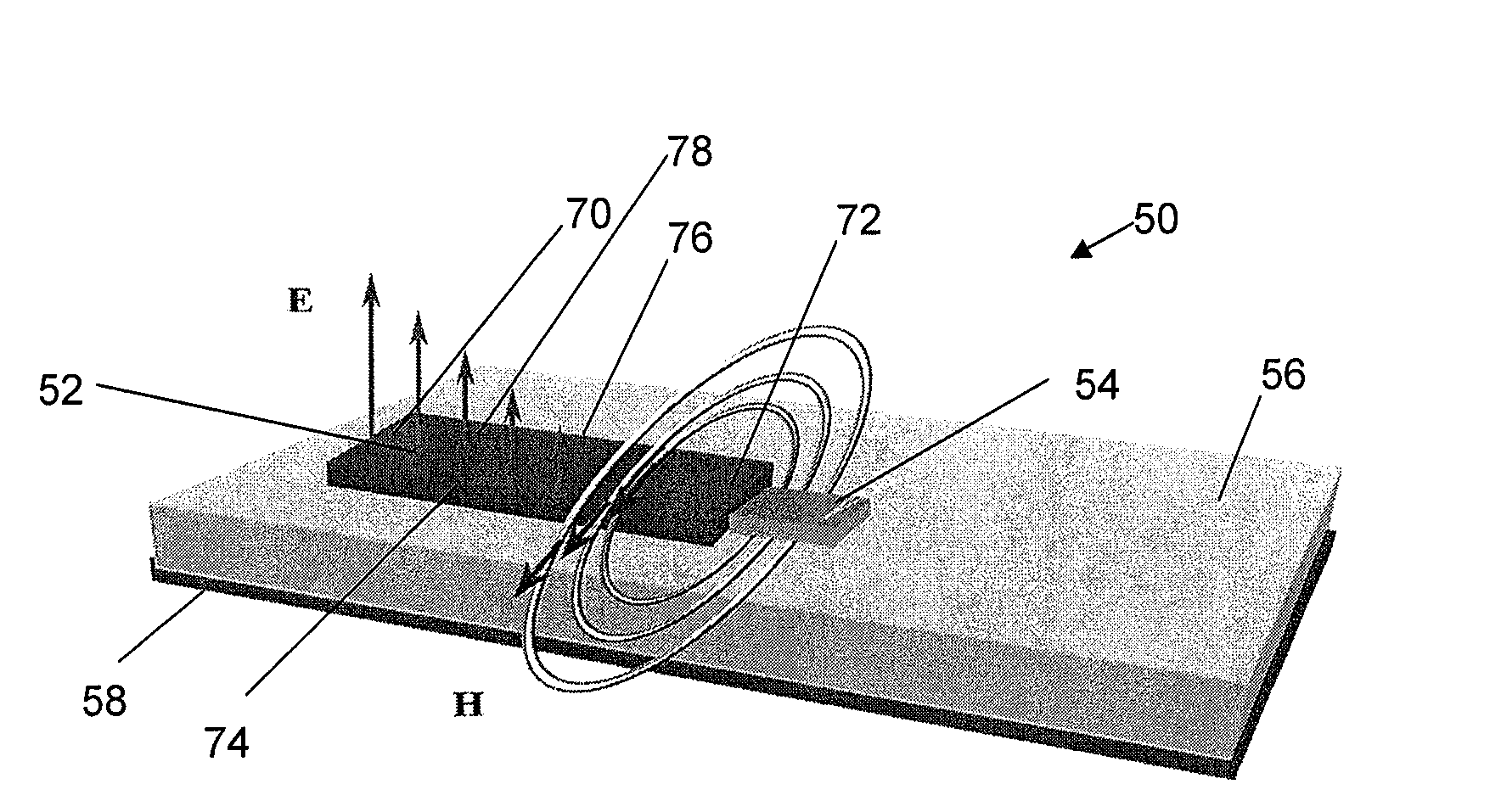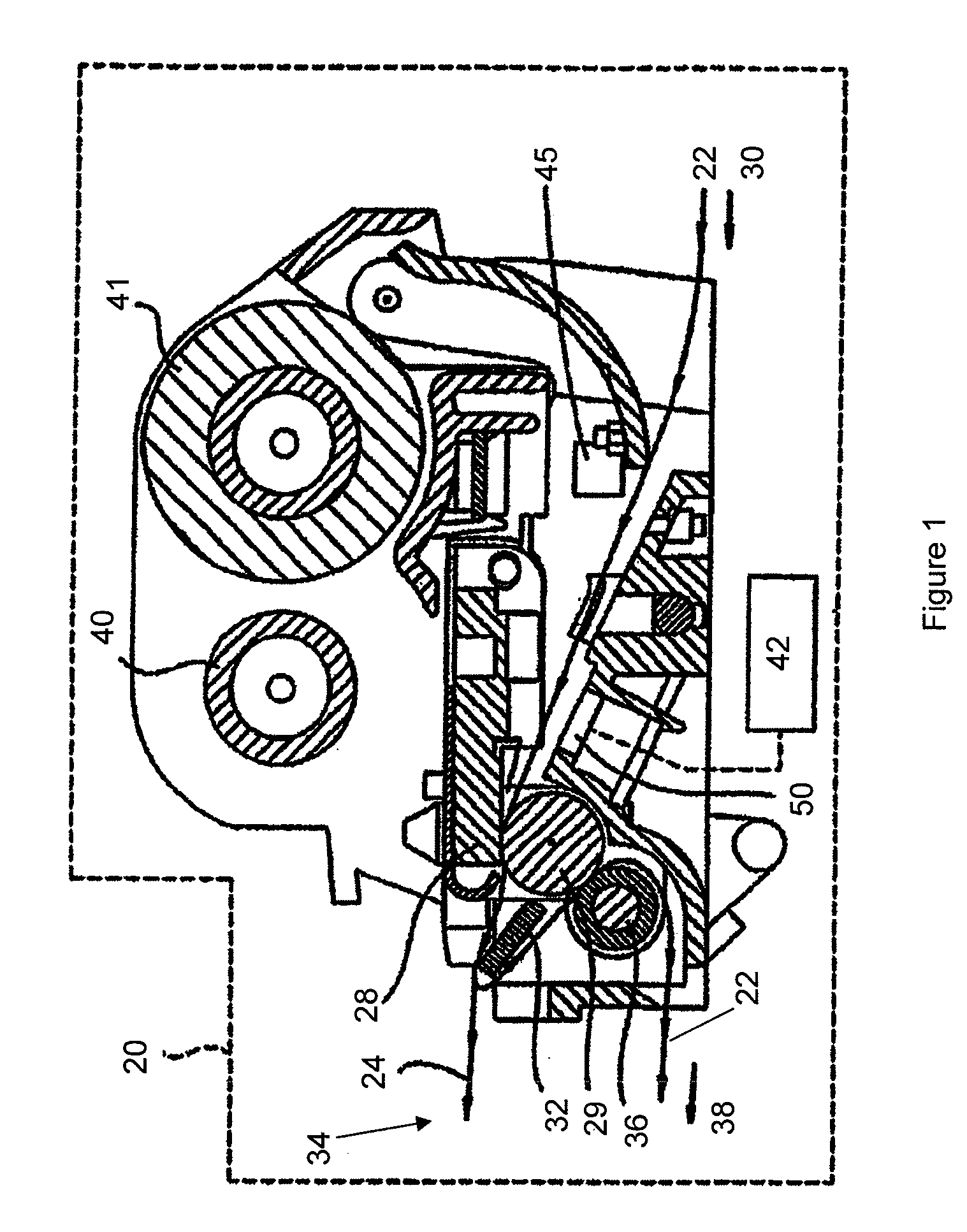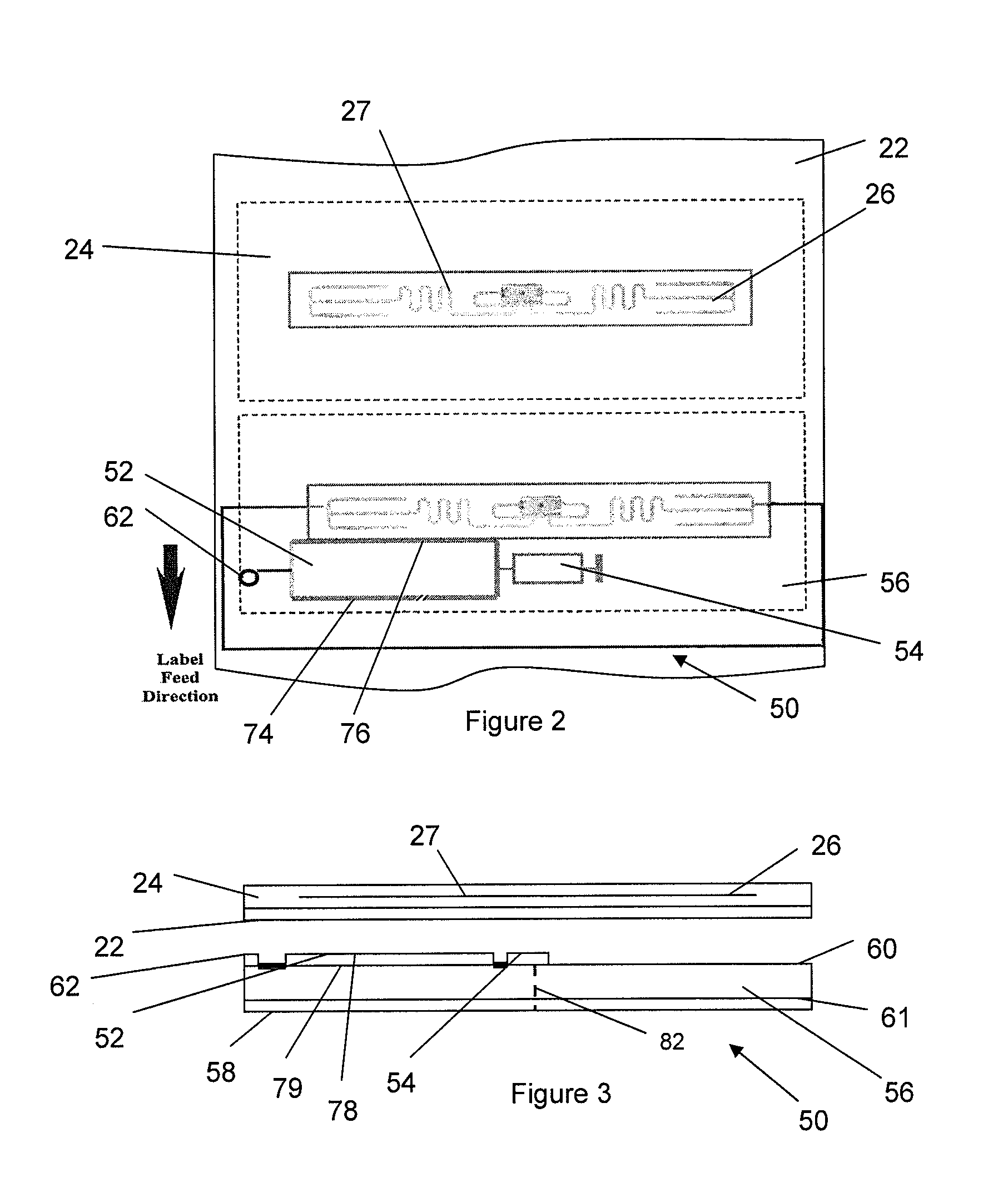Near-Field Miniature Coupler
a near-field, coupler technology, applied in the direction of mechanical actuation of burglar alarms, instruments, pulse techniques, etc., can solve the problems of inability to increase system complexity, cost, etc., to minimize the footprint of the coupler, minimize the inadvertent activation, and control the coupling range
- Summary
- Abstract
- Description
- Claims
- Application Information
AI Technical Summary
Benefits of technology
Problems solved by technology
Method used
Image
Examples
Embodiment Construction
[0020]The present invention now will be described more fully hereinafter with reference to the accompanying drawings, in which some, but not all embodiments of the invention are shown. Indeed, this invention may be embodied in many different forms and should not be construed as limited to the embodiments set forth herein; rather, these embodiments are provided so that this disclosure will satisfy applicable legal requirements. Like numbers refer to like elements throughout.
[0021]The present invention concerns an apparatus for enabling an RFID transceiver (sometimes referred to as a “reader”) to selectively communicate with a targeted transponder that is commingled among or positioned in proximity to multiple adjacent transponders. As will be apparent to one of ordinary skill in the art, various embodiments of the present invention are described below that selectively communicate with a targeted transponder without requiring physical isolation of the transponder using space-consuming...
PUM
 Login to View More
Login to View More Abstract
Description
Claims
Application Information
 Login to View More
Login to View More - R&D
- Intellectual Property
- Life Sciences
- Materials
- Tech Scout
- Unparalleled Data Quality
- Higher Quality Content
- 60% Fewer Hallucinations
Browse by: Latest US Patents, China's latest patents, Technical Efficacy Thesaurus, Application Domain, Technology Topic, Popular Technical Reports.
© 2025 PatSnap. All rights reserved.Legal|Privacy policy|Modern Slavery Act Transparency Statement|Sitemap|About US| Contact US: help@patsnap.com



